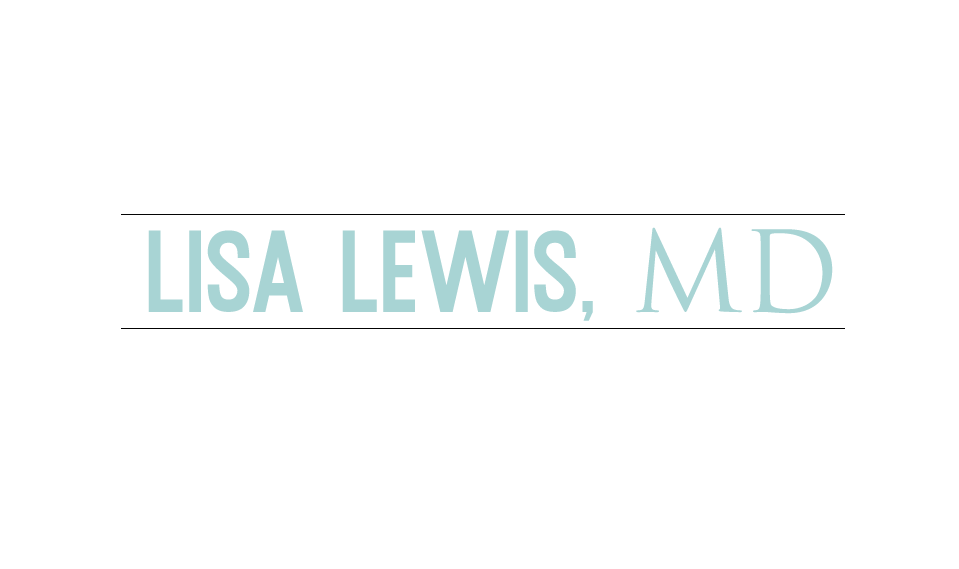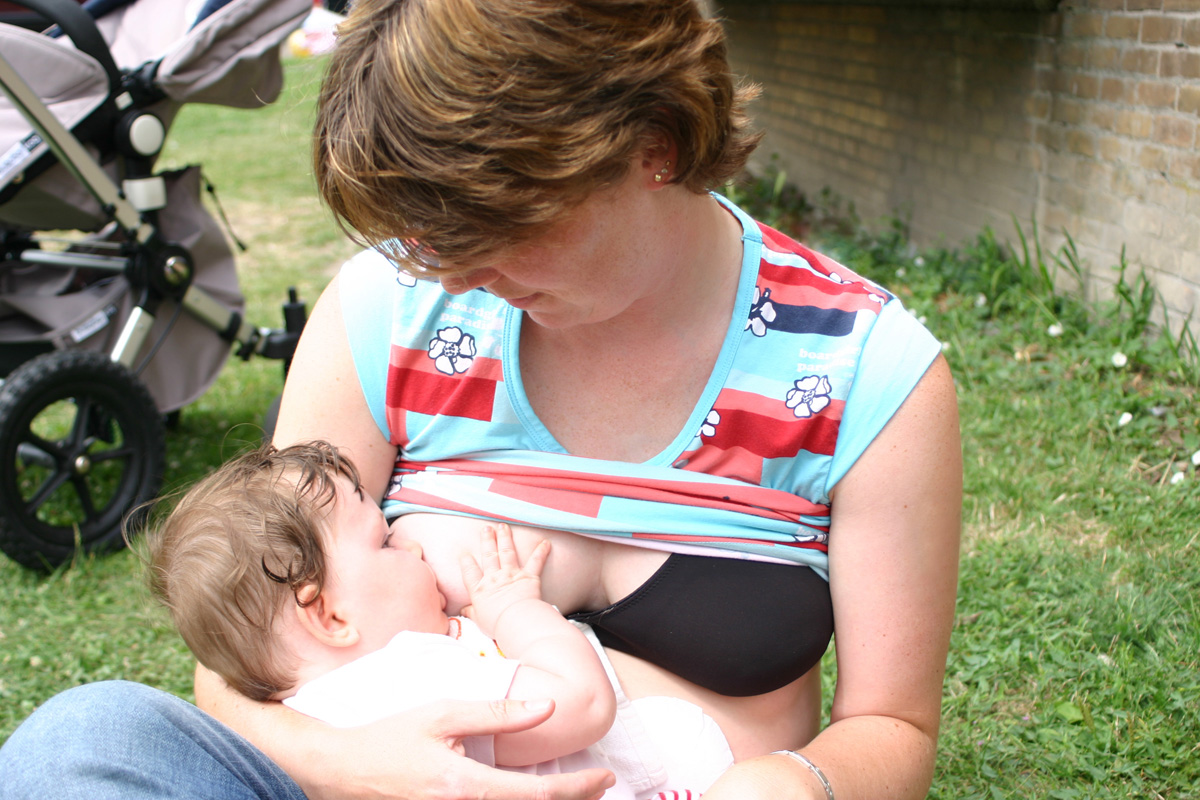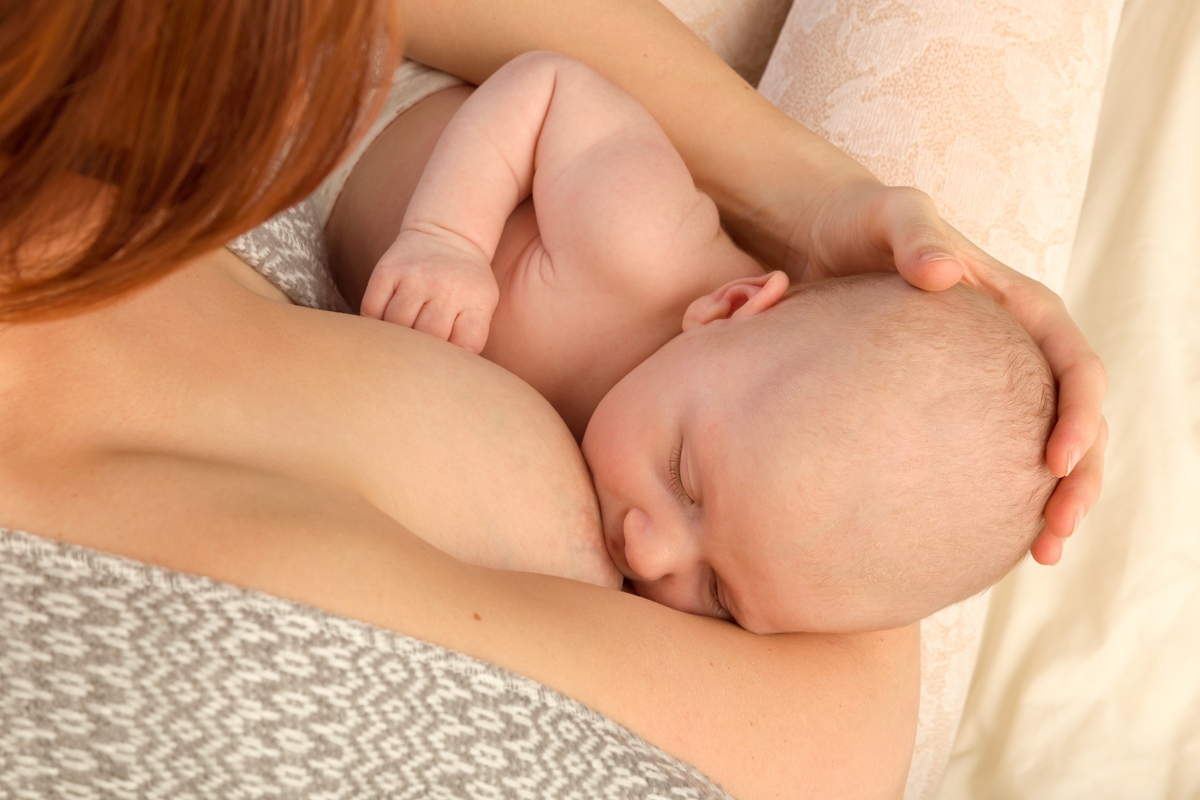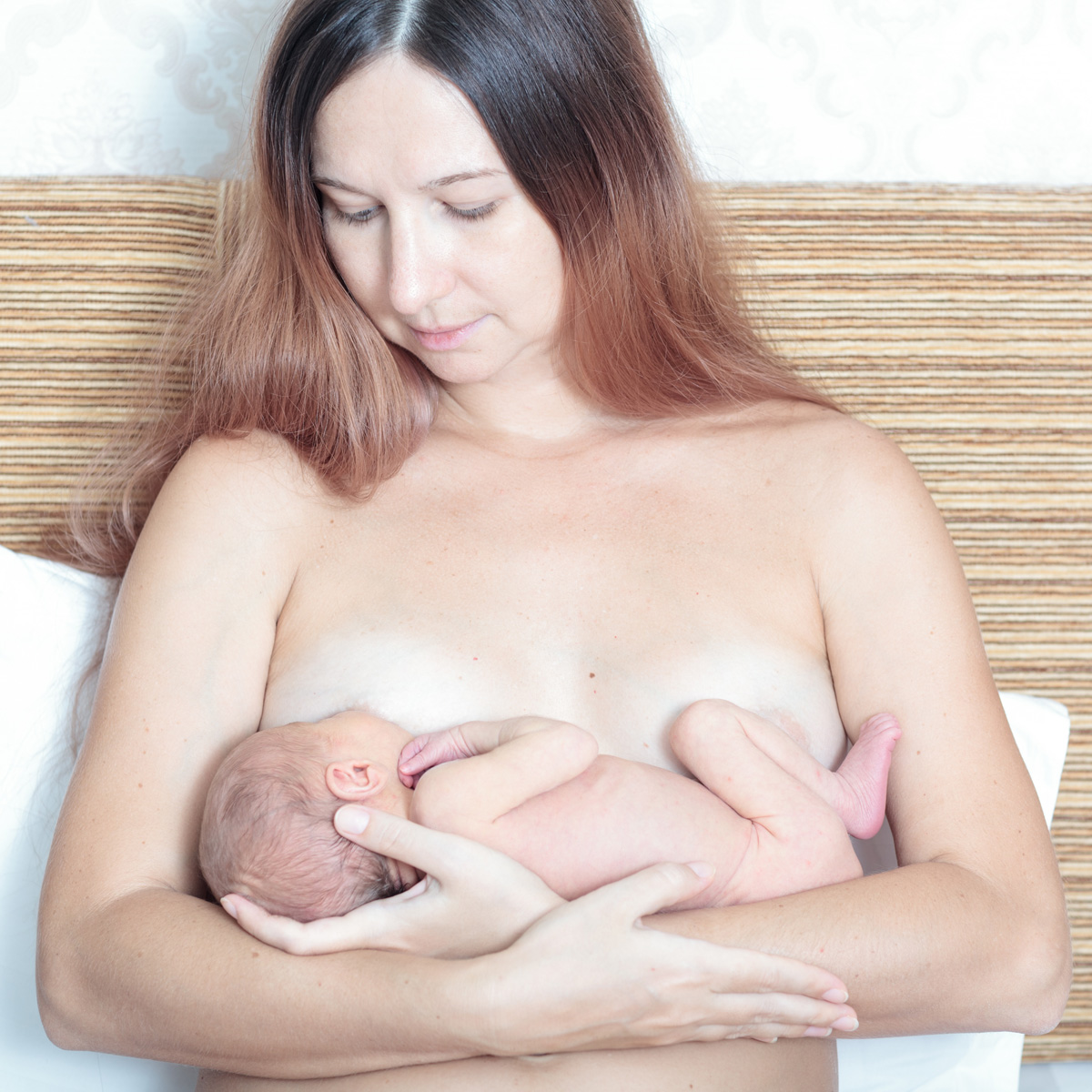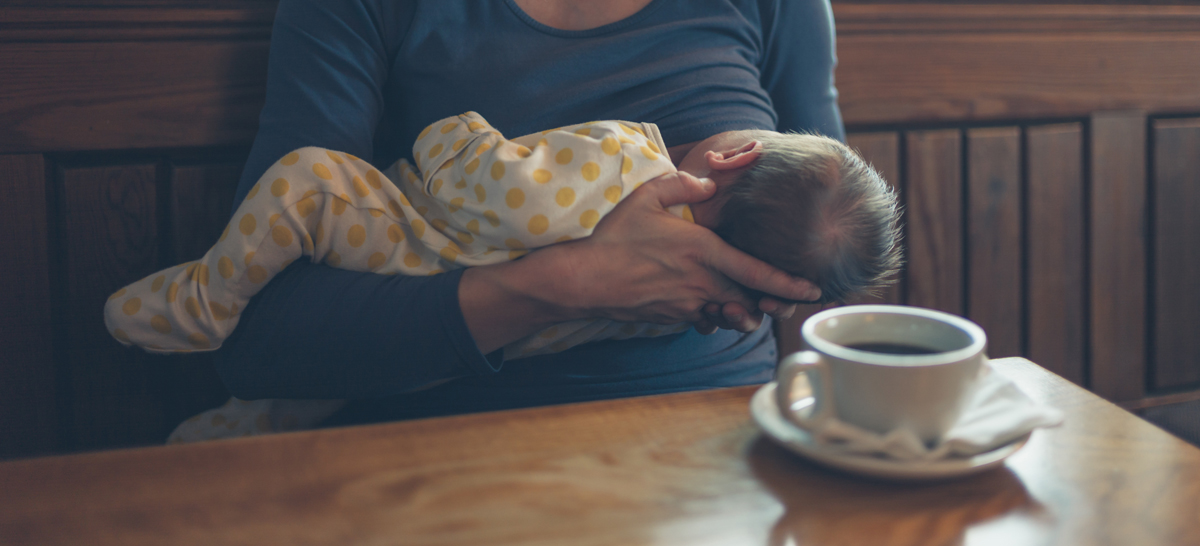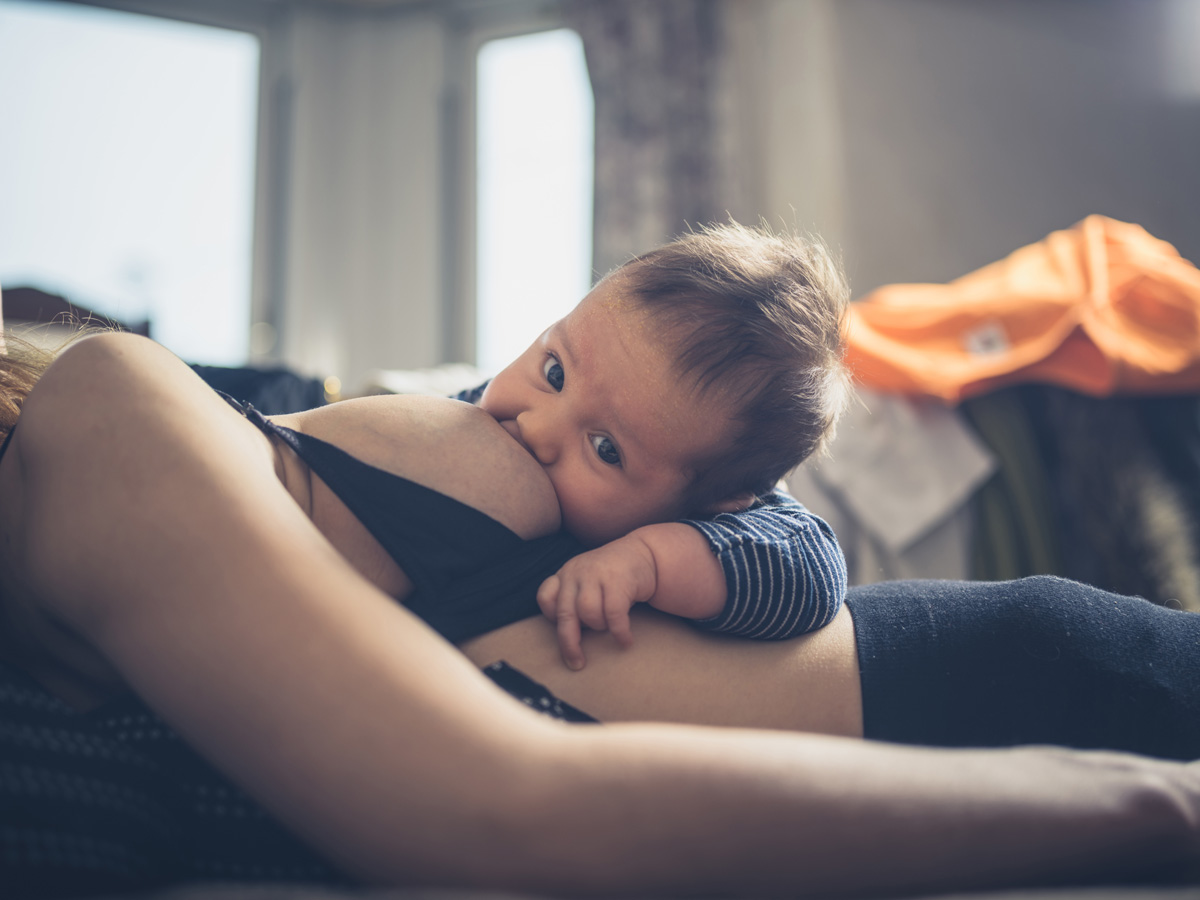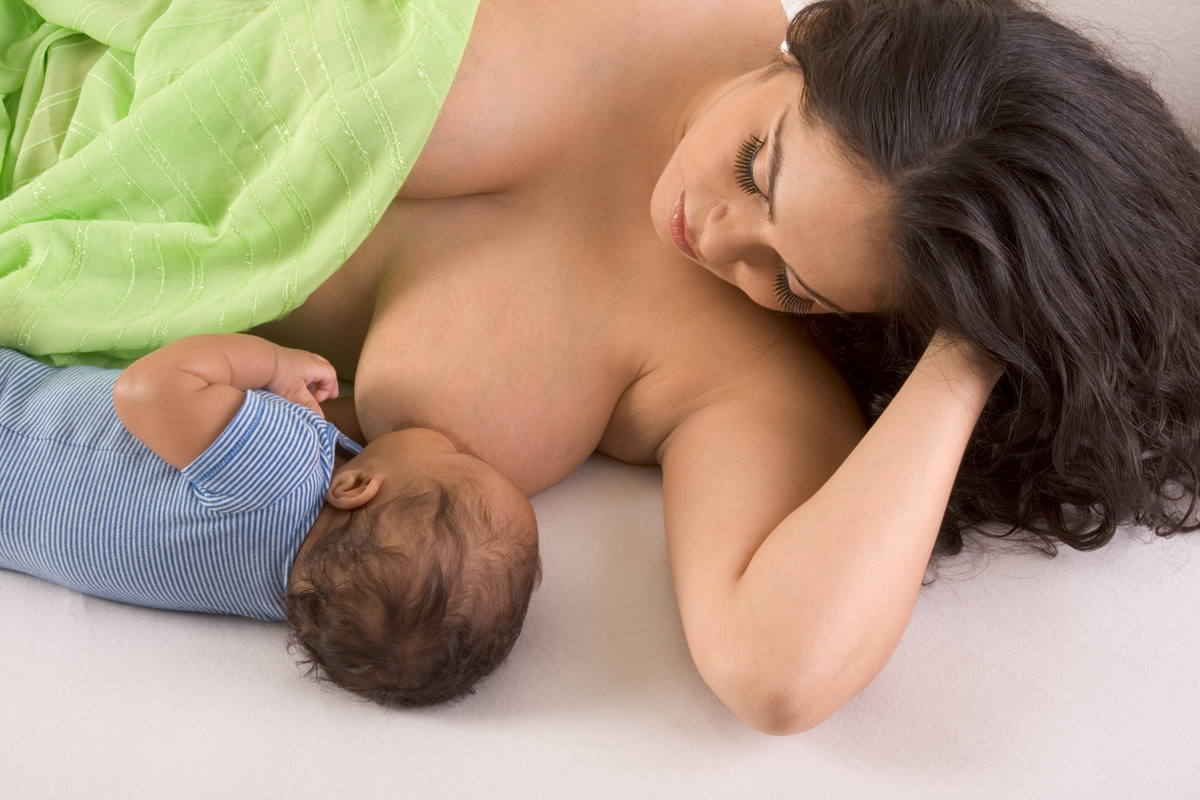Breastfeeding Positions You’ll Love
Choose breastfeeding positions that are relaxing for both you and your baby. Any position the baby finds comfortable with a good opening to breathe works. As the months march on, you’ll find that your baby moves and wants to reposition often. The following are common positions breastfeeding mothers use.
Cradle Position. A popular position used for baby comfort and breastfeeding ease while sitting up, the cradle position is enjoyable for the mom as well. Your baby’s head is in the crook of your elbow with her whole body facing you. In other words, she’s on her side, turned toward you. If she doesn’t immediately take your breast, use your opposite hand to insert your nipple gently into her mouth.
Your arm supports the baby’s head and neck. This is a good position for eye contact. Below is a picture of a mother in the Netherlands using the cradle position. Note how she is sitting and using her leg to support her arm. If you aren’t sitting, you can use the arm of a chair or a pillow under your arm for support.
Cross-cradle Hold. Think of the cross-cradle hold as the cradle hold’s cousin. This position uses the opposite hand and arm to support your baby’s head. If you’re nursing from your left breast, use your right hand and arm to hold your baby. Again, your baby is on his side and his body, chest, and tummy are facing you. You can use your other hand to delicately insert your nipple into his mouth. As with the cradle position, you can use a pillow, arm of a chair, or sit with your legs to support you.
The Double Cradle. Haven’t had enough cradling? The double cradle position uses both arms and hands to give your baby extra support. After a while, the arms can get tired, and it’s OK to position pillows under each arm or use a chair with arms for this position.
Football Position. Your baby’s back is lying on your forearm (hence the term “football position”), and you support her head and neck in your palm. This position takes pressure off your abdomen if you’ve had a Cesarean section (C-section). The football position is also helpful if you have a strong flow with let-down of milk.
Biological Nursing (laid back). This one can be helpful for moms whose backs are sore or who have smaller breasts. Lean back on a bed or couch. Your body should be well supported by pillows. Put your baby tummy-to-tummy onto your body. Your baby can rest on you in any direction, as long as the whole front of the body is against yours and he can reach your breast. Your infant will naturally latch on in this position. (You can also use your hand to insert your nipple into his little mouth.) This is a good position for a mom who has had a C-section or just needs extra rest.
Side-lying Position. Using a pillow to get comfortable, lie on your side with your baby on her side. Snuggle up to your baby and use your free hand to lift your breast and nipple into her mouth. Support your baby’s head and neck with your free hand. This is an easy position for both of you to snooze, so make sure you have a separate sleep area close by for when you get drowsy.
Breastfeeding in a Baby Sling. Although wearing a baby in a sling has “caught on” in the past two decades, breastfeeding in a sling has been a part of our global community for centuries. Women in Africa who may need to walk long distances enjoy the luxury of carrying their babies with them in a sling, and their babies are able to breastfeed when they are hungry.
Babies have good head control between four and six months and, at this time, are able to breastfeed in a sling. Breastfeeding in a sling is more of an angled or upright position with the legs and tummy facing your body. The benefit is that the sling supports the baby’s back, so you can work to insert your nipple into his mouth or just take extra time to enjoy watching him feed.
For more information about breastfeeding, reference La Leche League International.
